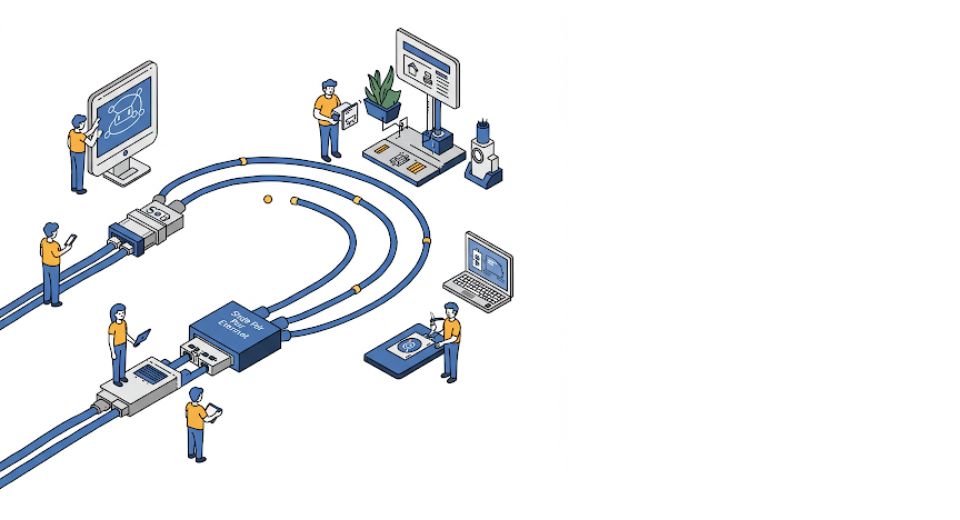
Apr 17, 2025

The recently published findings from Metastat Insight are analyzing the moving and shifting frontiers of the Global Single Pair Ethernet Market, indicating how connectivity requirements are changing the very fabric of data transmission and network infrastructure. Single Pair Ethernet (SPE) is no more just a technical evolution in the world of communication protocols; it is a direct answer to a shift in requirements on how machines, systems, and smart environments must communicate. Lightweight in construction and compact in design, SPE architecture is a preferred solution to connect devices in the industrial and automotive worlds where space, weight, and simplicity are not mere preferences but an absolute must. As the number of connected devices increases and higher speeds/consistent performance are expected, SPE found a niche for itself as a strategic enabler for network design.
Within production environments, SPE has started to unmistakably transform, drawing control together with sensors, actuators, and embedded electronics. The traditional model of layered connectivity that relies on a plethora of cable types, interfaces, and communication protocols has long been used despite its inherent drawbacks. Single Pair Ethernet represents an intelligent alternative to accentuate the delivery of data and power over a single twisted pair. This sounds very technical, but it emphasizes straightforward things: installation is simpler and cheaper, improving performance on compact tight systems; hence, adoption has always been a concern within industrial circles, not a context created by a marketing trend.
With change in its automotive sector manifestly divergent. As present vehicles increasingly rely on electronic systems-from infotainment to safety-the internal communication structure of a car is being further complicated. Single Pair Ethernet thereby meets growing demands for connectivity in-vehicle with reduced weight-load on vehicle design. Less wiring means less material, which directly affects manufacturing and affects performance. The change has therefore been given a high promise by the industry as it caters for a very specific set of challenges traditional solutions could not address adequately.
The subtle yet significant evolution of the SPE is benefitting commercial buildings and smart infrastructures. The requirements of infrastructure have innovatively transformed into an integrated arena of lighting, HVAC systems, and security. Single Pair Ethernet naturally binds along these transitions, endorsing small device functions in distributed networks where classic Ethernet would prove impractical. By using SPE instead of typical heavy, expensive, and low-flexibility cabling, commercial designers can smarten the fore edge, ensuring that there is an affordable and effective connection for any sensor or actuator, however small.
One of the somewhat lesser-knowns is how SPE is changing hardware-level design thinking. All these connectors, switches, and microcontrollers are now set to conform to the SPE standards. It is, however, not only about standards but has allowed engineers to rethink the available built and logical architecture of these networks. Instead, engineers are now looking at how they can reduce the footprint of their designs while reliability or functionality remains guaranteed. Huge considerations in making devices future proof include ensuring that products to be designed today can run their functions once manufactured but also can be able to integrate seamlessly into environments where devices are extremely dense and constantly transmitting data.
Telecommunications and energy have made quite a mark in applications opportunities now shaping Single Pair Ethernet. For dusty field locations where performance ruggedness is the call of the day- even remote energy grids- the simplicity of SPE wields enormous logistical benefits. Such simplicity in the wiring means fewer points of failure deriving from lesser components overall. These grades are essential in harsh remote conditions of maintenance access. SPE is competition, not the focus of the spotlight, in such systems but has proven itself a strong foundational layer for the technologies that have higher visibility.
It is also noted in a most non-descript but salient way how standardization has quietly evolved into a growth mechanism in the market. Many technical standards development and maintenance organizations have propelled interoperability between their manufactured capabilities. The development of this silent background has led to the spread of acceptance and adoption in many other industries. With all those efforts in silence, the promise of SPE would have still remained only as theory or, at best, niche applications.
The future trajectory of Global Single Pair Ethernet Market continues its course through practical needs, rather than through trend predictions. The technology has made its entry not through coercion, but by relevance. SPE caters to the real issues that legacy systems cannot solve and that manufacturers, infrastructure planners, and system architects have thus turned to SPE. Expansion is being led by those who understand the demands of modern connectivity, not just data transfer rates but in physical area, integration, and long-term scalability.
It is also very clear from the insights that the technology has moved into the mainstream position through enabling solutions that are very efficient, lean, and highly technically aligned with future communicative needs, in no case still operating on the fringes of innovation as presented by the Global Single Pair Ethernet Market Report.
Drop us an email at:
Call us on:
+1 214 613 5758
+91 73850 57479